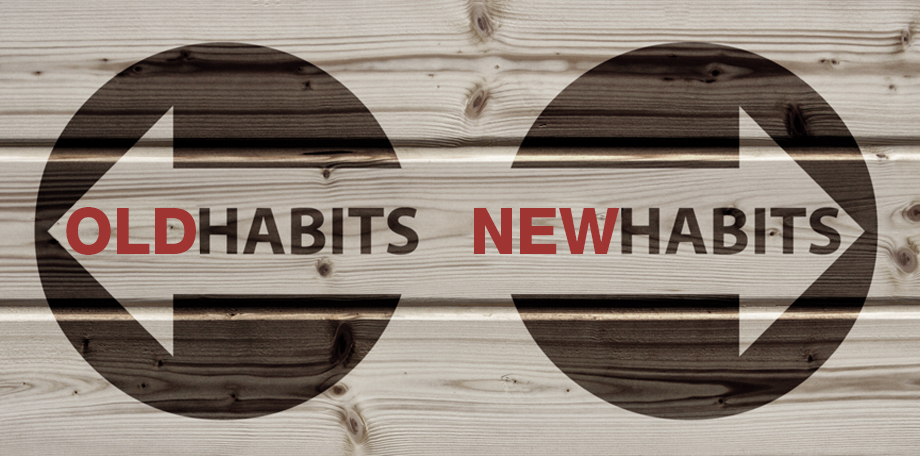Ringing in the new year, anticipating a high school reunion or simply reading a powerful magazine article can all inspire earnest promises of self-improvement. Yet from smoking to procrastinating, old habits can be tough to break. And new ones — like practicing meditation for 10 minutes every morning — can be hard to adopt.
While it’s often tough at first, changing habits can be the key to improving our health, productivity and overall well being. With our coaches’ understanding of the science of changing habits, we have helped many clients set goals and change behaviors.
Physics 101: Why Is Changing Habits So Tough?
Think of Newton’s First Law of Motion: “Every object in a state of uniform motion tends to remain in that state of motion unless an external force is applied to it.”
In other words, objects in motion tend to stay in motion. The same concept applies to human behavior, particularly when it comes to changing habits. Getting started — making that first shift — is often the hardest part. Once a new habit has been created, momentum takes over, and keeps it going.
It’s Not Just About Willpower
Contrary to what many people think, changing habits involves more than just willpower. Blaming — or crediting — willpower for our ability to adopt a new or break an old habit is unfair.
According to neuroscientists, the brain’s basal ganglia control habit formation. The basal ganglia are associated with subconscious or unconscious processes — emotions and memories. When we perform an action over and over, it becomes deeply embedded in our brains. As a result, it takes significantly less effort to repeat that action than it would to choose a new one.
Changing habits requires us to make a conscious decision, a process performed in the prefrontal cortex of the brain. In order to change the way we do things, we need to be mindful, making conscious decisions and efforts (“willpower”) until the basal ganglia take over, and we can focus on other things. Once you repeat a pattern of behavior without conscious thought, you’ve created a new habit, which is now etched in your neural pathway. Willpower no longer enters into the equation.
3 Strategies for Successfully Changing Habits
1. Ready … set … START! It doesn’t matter if it’s January 1st or well into spring. If you want to start waking up an hour earlier to increase your productivity, set your alarm for one hour earlier — tomorrow morning. When it comes to changing habits, adopt Nike’s famous slogan: Just Do It.
2. Focus on performance, not perfection. Changing habits requires consistency. If adding exercise into your daily routine is a habit you’d like to create, be consistent. Don’t worry if you wind up exercising for 10 minutes or 30 minutes. It doesn’t matter. What counts is that you are creating the habit of exercising daily.
3. Embrace the power of “triggers.” Neuroscientists suggest creating (or modifying) “triggers” that remind us to perform good habits — and not to engage in bad ones. A trigger can be an object, place or event that invokes the automatic urge to do something.
Smokers may find a cup of coffee, walking into a bar, or talking on the phone to be triggers that make them want to light up. By modifying a trigger — standing rather than sitting when talking on the phone, for example — you can “trick” your brain into disassociating smoking with that particular trigger.
Triggers work for creating positive habits as well. Want to start eating healthier? Fill an attractive bowl with seasonal fruit, and place it in a prominent spot in your kitchen. Every time you walk past the bowl, it will serve as a trigger to grab an apple instead of a candy bar. The stronger the bond between the trigger and the habit, the more engrained the habit will become.
Habit Formation: From Theory to Practice
When thinking about changing habits, we often focus on kicking our bad habits. But the following example shows how one of our clients created a good habit, which became her daily routine.
“Every night as I would set my alarm for morning, I would think about what time I would meet my first client and then move backward from there. ‘What time should I leave? What if the train is running behind? If it’s snowing it may be worse… maybe I should leave earlier. How late can I get up and still make it downtown? I may want to stop and get coffee… Will I have enough time? I want to have 10 minutes of mindful focus in the office before my client arrives.”
“I could go on and on about the thoughts in my head. Every night and every morning my brain was filled with ‘what ifs’ and concern. Then one day I decided to create a new habit. The reward of doing this routine day after day has allowed me much more mindfulness and peace.”
“Every morning, I leave my house one hour before I meet with my first client — NO MATTER WHAT! It may take me 25 minutes to get to the office, perhaps 50 minutes. But it doesn’t matter. The train may be late… I don’t worry. My brain can be creating — not getting myself in a panic or worry state. Sometimes it gives me the opportunity to walk around the neighborhood for 20 minutes before work. The peace I feel is fabulous. It took me years to figure that out.”
Is changing habits on your radar this year? Try the strategies listed above, or contact one of our coaches to guide you through the process of setting goals and making behavioral changes.



